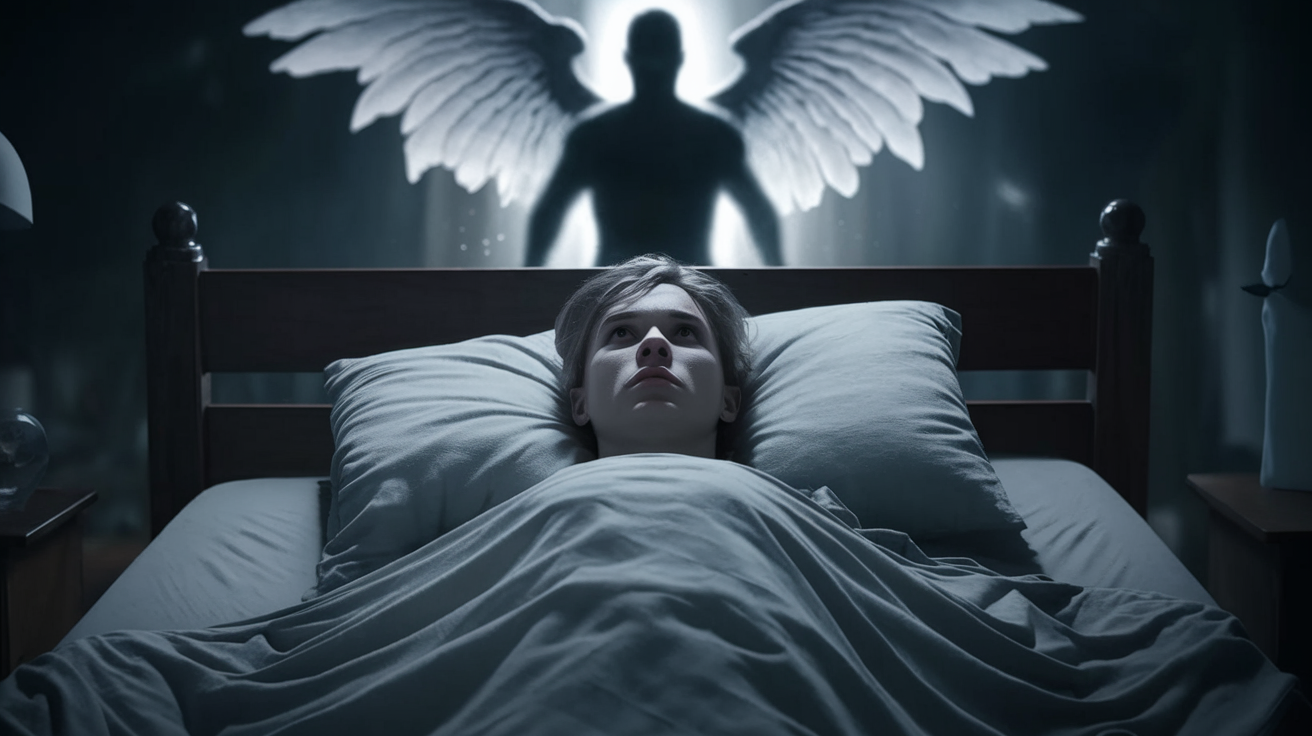Physical Address
304 North Cardinal St.
Dorchester Center, MA 02124
Physical Address
304 North Cardinal St.
Dorchester Center, MA 02124


Have you ever found yourself waking up, unable to move, and filled with a sense of panic? This eerie experience is known as sleep paralysis, and while it can be distressing, it holds potential for something much more extraordinary: lucid dreaming. The phenomenon of transitioning from sleep paralysis to lucid dreams can be a powerful way to explore your subconscious while in control of your dream environment. This article will guide you through understanding sleep paralysis, how it can lead to lucid dreams, and what techniques can help harness this experience effectively.
Sleep paralysis is a temporary condition where you are conscious but unable to move or speak. It occurs during the transition between wakefulness and sleep, specifically when your body enters or exits Rapid Eye Movement (REM) sleep. During REM, the brain is highly active, and vivid dreaming occurs, but the body enters a state of atonia, which paralyzes most voluntary muscles. This natural function prevents us from physically acting out our dreams. However, if you regain awareness before REM ends, sleep paralysis can occur.

Sleep paralysis can be triggered by various factors, including:
The transition from sleep paralysis to lucid dreams is both possible and transformative. Lucid dreaming is when a person becomes aware that they are dreaming and may even gain the ability to control the dream. For those familiar with sleep paralysis, this state can be used as a gateway to lucid dreaming.
Both sleep paralysis and lucid dreaming occur during the REM phase of sleep. The awareness experienced in sleep paralysis can be redirected to form a lucid dream. Instead of focusing on the fear or discomfort, training your mind to shift toward visualization can turn the experience into an empowering dream state.
For those who wish to minimize episodes of sleep paralysis, there are several strategies that can help. Reducing the frequency of sleep paralysis involves addressing its common triggers and fostering better sleep habits.
It’s essential to remember that sleep paralysis is not harmful and will pass on its own. Focusing on your breathing and keeping calm can help you transition out of it more smoothly.
Lucid dreaming requires practice and dedication. It involves techniques to help increase dream awareness and control within the dream state. Here’s how to achieve lucid dreaming:
Yes, sleep paralysis can lead to lucid dreams. The transition is not automatic but can be facilitated through conscious techniques.
Moving from sleep paralysis to lucid dreams involves learning how to guide your awareness seamlessly. Here’s how to master this process:
Visualization is key to making the leap from sleep paralysis to a lucid dream. Picture a scene that makes you feel at peace or excited—perhaps a beach, a forest, or a familiar place. Immerse yourself in this visualization by imagining the sensory details: the sound of waves, the feel of sand under your feet, or the scent of pine trees.
An anchor is a thought or mental image that helps ground you during the transition. Choose something simple yet powerful, such as a glowing light or a repetitive word. Focus on this anchor as you ease into the dream state.
Deep, rhythmic breathing helps keep your mind calm and focused. Practice the 4-7-8 technique:
It can be challenging to differentiate between sleep paralysis and a lucid dream, especially when transitioning between the two states.
To avoid confusion between the two states, use reality checks and dream recall practices. These techniques help establish a stronger understanding of your dream states and reduce the overlap between the sensations of sleep paralysis and lucid dreams.
Relaxation is a crucial component when aiming to transition from sleep paralysis to lucid dreams. Keeping your mind calm can prevent fear from taking over and facilitate an easier shift into a dream state.
As you begin to relax during sleep paralysis, visualize a dream scene that you wish to enter. Imagine yourself stepping into that scene, feeling the change from paralysis to freedom within the dream. This technique often requires practice but becomes more natural with time.
While sleep paralysis itself isn’t harmful, many find it unsettling. If you want to reduce its frequency, there are specific preventative measures you can take.
Sleep paralysis is caused by a disconnect between the brain and body during the REM stage of sleep. Factors such as sleep deprivation, stress, and irregular sleep patterns can increase its occurrence.
With practice, most people can learn to experience lucid dreams. The frequency and ease of achieving them can vary from person to person.
Episodes of sleep paralysis typically last from a few seconds to a couple of minutes. Although it may feel longer due to the intensity, it always resolves on its own.
No, sleep paralysis is not dangerous. It is a natural part of the sleep cycle and does not cause any physical harm.
Focus on your breathing and remind yourself that sleep paralysis is temporary. Visualization techniques or moving a small muscle, like your fingers or toes, can help end the episode.
Lucid dreaming is generally safe and can enhance creativity, reduce nightmares, and even aid in problem-solving. However, excessive practice can interfere with normal sleep, so moderation is key.
Incorporate reality checks into your daily routine. Frequently ask yourself, “Am I dreaming?” and use cues like looking at your hands or a digital clock. This habit can help you recognize when you are in a dream.
The journey from sleep paralysis to lucid dreams can be an empowering way to explore the depths of your subconscious. By understanding sleep paralysis and learning techniques to transition into a lucid dream, you can turn a potentially frightening experience into one of wonder and exploration. The process involves patience, practice, and mindfulness, but the result is a deeper connection to your dream world.
With the right strategies, such as visualization, relaxation, and reality checks, you can safely and effectively navigate from sleep paralysis to lucid dreams. By incorporating these methods into your nightly routine, you can unlock the full potential of your dreams and make the most of this unique state of consciousness.